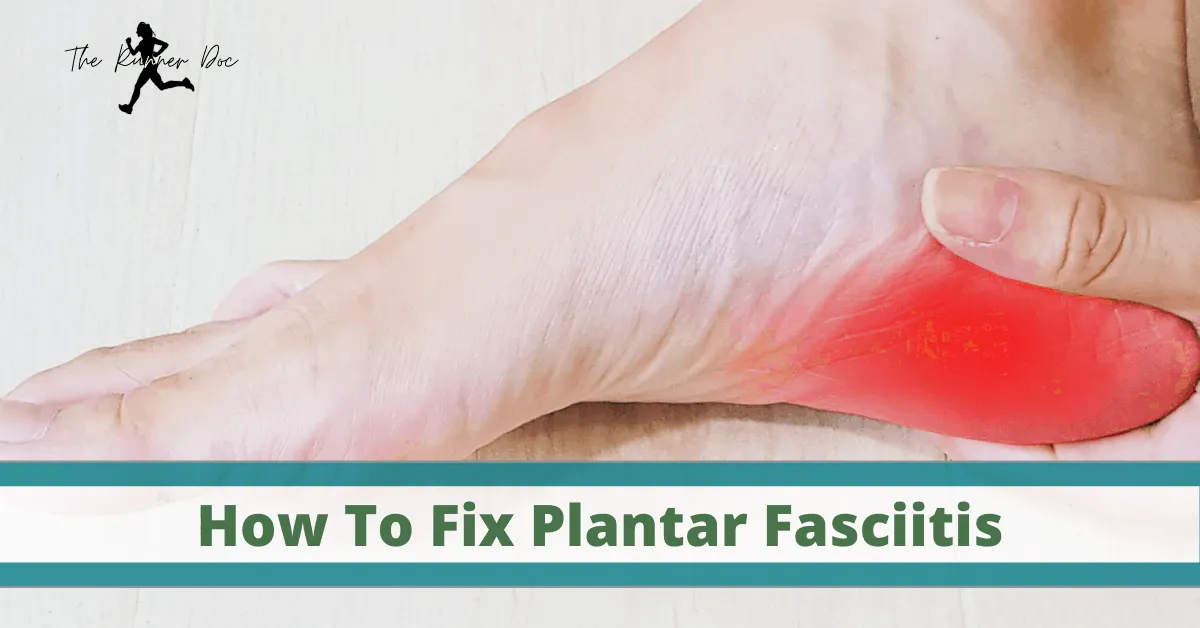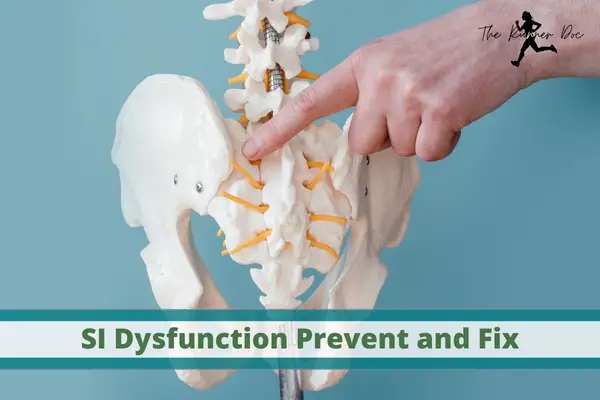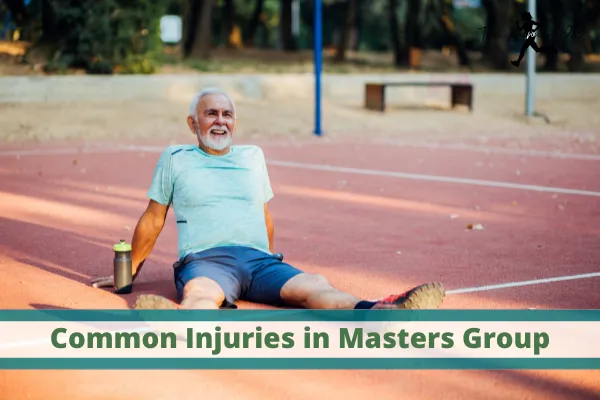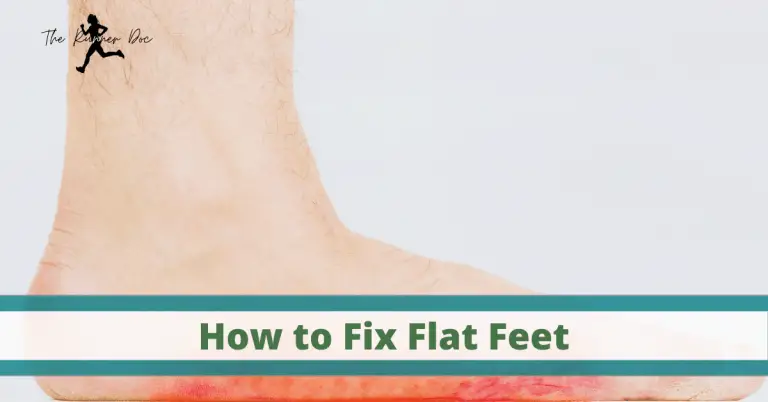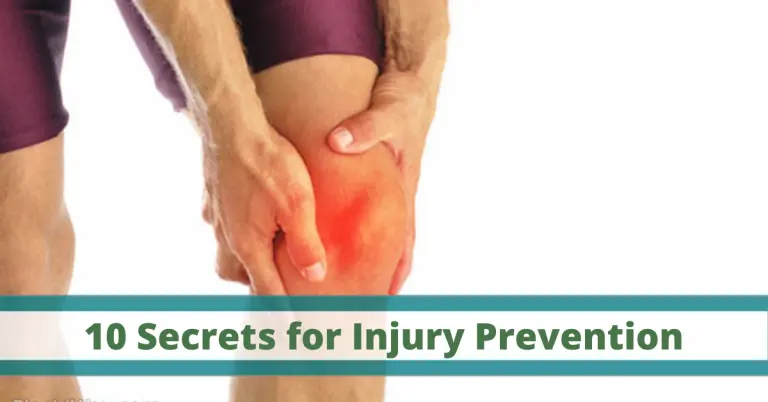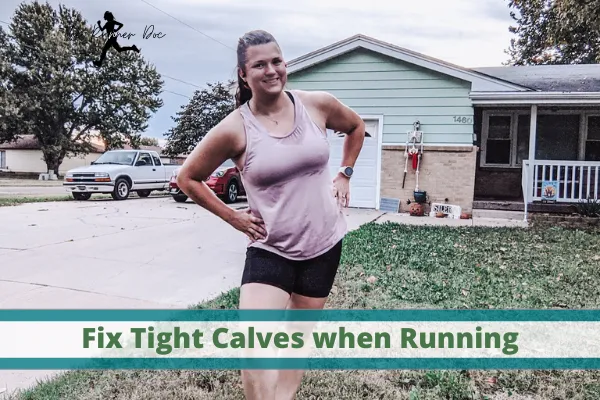How To Fix Plantar Fasciitis in Runners
Oh plantar fasciitis…you fickle fickle beast for runners. One of the most common if not THE most common foot injury in runners is plantar fasciopathy.
Notice that I said fasciopathy which is the same thing as a tendinopathy and not an “itis” at all. Basically, this means that plantar fasciitis (fasciopathy) responds realy really well to load.
Anatomy Lesson
The plantar fascia is a thick fibrous connective tissue that runs from the heel to your toes. It contributes in forming the arch of your foot and assists in stability of your foot without muscular involvement.
As you can see in the picture the plantar fascia runs along the bottom of our foot starting at the heel which is where the Achilles tenon ends on the back of the heel/calcaneal bone.
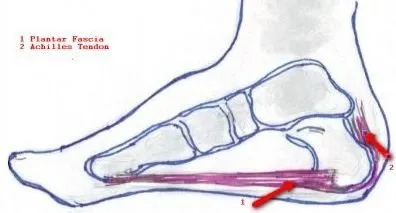
What is Plantar Fasciitis/Fasciopathy
Plantar fasciopathy accounts for 10-22% of running related injuries. Let’s just take a minute to absorb that information. Think of it this way. Think of 9 other runners that you know. Got them? K, so in the next year 1-2 of you will have developed plantar fasciitis.
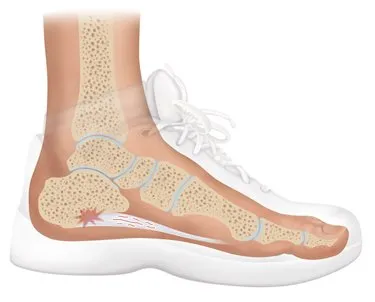
Plantar fasciopathy typically responds to conservative treatment in almost 90% of patients within 9 to 12 months from the onset of symptoms. It isn’t a quick fix that is for sure. It is also self-limiting. Meaning people with PF usually limit themselves by the pain more often than not.
What are the Symptoms of Plantar Fasciitis in Runners
per Physio-pedia:
- Heel pain with first steps in the morning or after long periods of non-weight bearing
- Tenderness to the anterior medial heel
- Limited dorsiflexion and tight Achilles tendon
- A limp may be present or may have a preference to toe walking
- Pain is usually worse when barefoot on hard surfaces and with stair climbing
- Many people have had a sudden increase in activity level
What Causes Plantar Fasciitis in Runners
Overall, honestly, they really don’t know what causes plantar fasciopathy in the general population. Basically, it is multifactorial and has many contributors such as gastrocnemius (calf muscle) tightness and decreased ankle dorsiflexion (which is the most common and highest risk factor).
1. Too much Too soon
This one again! Yup. A sudden increase or change in activity is one of the key factors in plantar fasciitis in runners. Our tissues can take a lot of stress and load. It is what they were designed to do. However, too much too soon will cause them to become weak, fragile and damaged.
Gradually loading the plantar fascia is the best way to keep it from getting injured.
2. Faulty Running Mechanics
This comes back to your running form. Issues such as overstriding and decreased strength will cause an increased likelihood of plantar fasciitis and foot pain. Running mechanics are typically the culprit to most injuries in runners and not running itself. Get a good gait analysis done by a physical therapist if you are concerned about your running form.
3. Lack of Variety in Footwear
Find more than one style/model of shoe you like to wear. Try to get at least two different styles to rotate between that way your body is challenged in different ways.
4. Muscle Imbalances
From your hips to your feet should be nice and strong and balanced. A quick check is the ability to stand on one leg well balanced. Notice that my hips are level and I’m not leaning one side or have my hip hiked up. Doing this in front of a mirror will really help you improve your form and see where you need to focus.
Another thing to note with standing on one leg is the knee. Your knee should NOT be collapsing in towards the other leg when you are doing this.
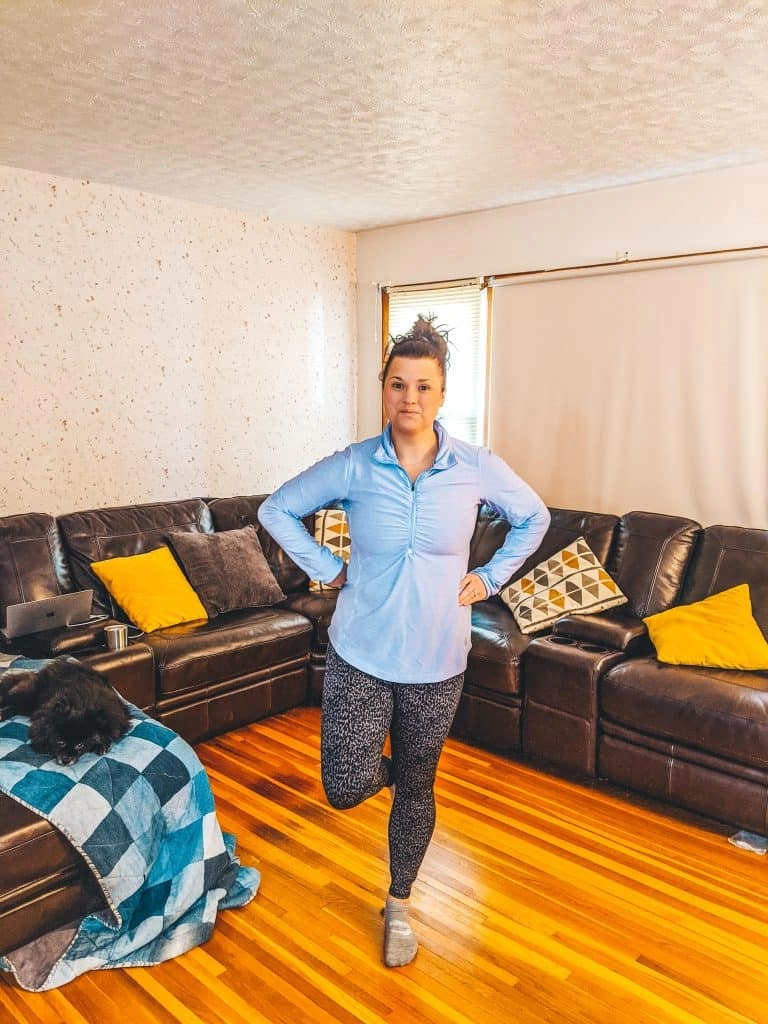
How To Fix Plantar Fasciitis in Runners
There are a few key ideas we want to focus on when treating plantar fasciopathy conservatively. The first is that it is a fasciopathy which means it responds well to being LOADED.
Therefore, our goals are to load the big toe, calf & intrinsic foot strengthening, and creating a more stable arch as well as maintaining this with single leg balance tasks
Stretching for Plantar Fasciitis in Runners
1. Soleus Stretch
Make sure your knee is bent on this one!! While many runners and people in general stretch their calves and just can’t figure out why it isn’t making a difference it is because there are two parts to your calf muscles!
The first is your gastrocnemius which is the muscle most people target with their calf stretch. However, a deeper muscle that doesn’t cross your knee joint is the soleus and is a culprit in a lot of foot and ankle running injuries because it becomes neglected. When you slightly bend your knee of the leg you are doing the calf stretch on you eliminate the gastroc and focus on this deep soleus muscle.
2. Plantar Fascia Stretch
Strengthening for Plantar Fasciitis in Runners
1. Big Toe Flexion + Plantarflexion
Get a wider band than I have in the video! Mine is about half the width it needs to be to stay put better on the toes and ball of your foot! I would recommend THIS SET.
2. Alternating Big Toe Lift + Little Toe Lifts
Start with doing these sitting down if you struggle and then progress to standing up while doing them!
Can I just point out here how hard these are? I’ve been working on them for a few weeks now and this is all the better I am at them. Practice them! They are important for your feet to be able to dissociate your toes from each other like this!! Your feet were made to move more than they do and a big part of why they are limited is our shoes!
We will get into detail about shoes at another time because that is just one big topic, several actually. BUT, my favorite daily shoes have become Vivobarefoot because of the way they let our feet move naturally!
3. Arch Lifts “Doming”
Try not to curl your toes when you do this one and instead slide the ball of your foot back.
Pants: Brooks Capr
4. Releve’ + Partial Sissy Squats
Yes, I realize that my knees are going over my toes on this. Yes, it is perfectly safe for your knees to go past your toes on these. Actually, it is perfectly safe for your knees to go past your toes during any lunges and squats too. This is an outdated myth and not functionally accurate for the way that our bodies work!
5. Wall Squat with Heel Raises
Pants: Brooks Capri
6. High Toe Walks
Night Splints
Orthotics have been used for a very long time for the treatment of plantar fasciitis. For the most part I’m not a big fan of in-shoe orthotics due to them not fixing much and just alleviating the pain. The root cause needs to be addressed.
There is one thing that I do recommend and think is helpful and that is a nightsplint. This helps keep your foot in a dorsiflexed position to keep things stretched out as you sleep and minimize morning pain. The big problem with these is that they are not the most comfortable to wear at night and are annoying too!
Rest – Not the Best
For fasciopathies we have found that rest really isn’t the best thing. You need to modify but still put stress on the tissues otherwise you will get into a cycle of rest, activity, pain, rest etc.
Does Plantar Fasciitis Go Away on its Own?
I don’t like giving definite answers but in this case the answer is no. Can you rest and maybe have the pain go away? Sure. But it will come back.
This is one of those nagging pains and injuries that is going to recur unless you fix the underlying cause and really dig deep into what is going on.
On top of doing the above exercises I also always recommend getting your running gait analyzed. At least once to see where some faulty mechanics might be. Also, hip strength is always a good place to start.
So back to the question if Plantar Fasciitis will go away on its own…no. Rest also won’t fix plantar fasciitis.
Final Thoughts on Plantar Fasciitis in Runners
Who has dealt or is currently dealing with plantar fasciitis?! I am!!
Remember what I said before. This is a long journey for getting back to 100%. It is very discouraging because it can take MONTHS for it to heal. But keep at it!!
The other piece of not-so-great news is that it will more than likely come back. That is unless you do some prehab exercises to keep things healthy and don’t fall into the common training errors that runners make. What prehab exercises should you do to prevent plantar fasciitis?
The ones that I just showed you :). Yes the treatment is the same as the prehab! Keep your feet mobile and strong and you are all set!
AFFILIATE DISCLOSURE
As an Amazon Associate, I earn from qualifying purchases. This post may contain affiliate links. If you use these links to buy something we may earn a commission. The Site may contain links to affiliate websites, and we receive an affiliate commission for any purchases made by you on the affiliate website using such links.
Resources
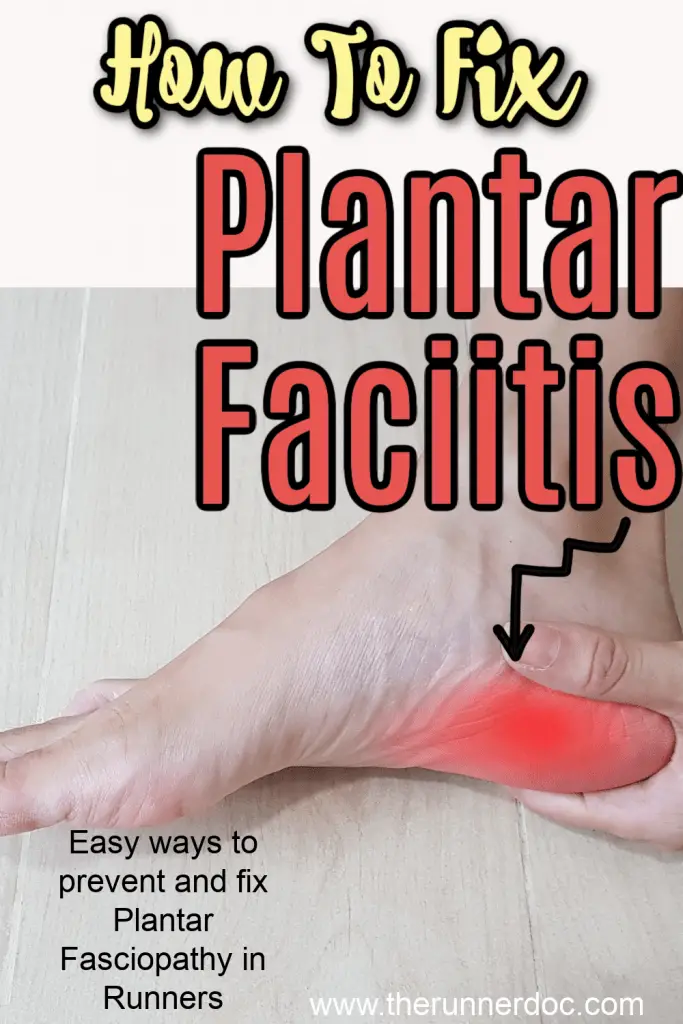
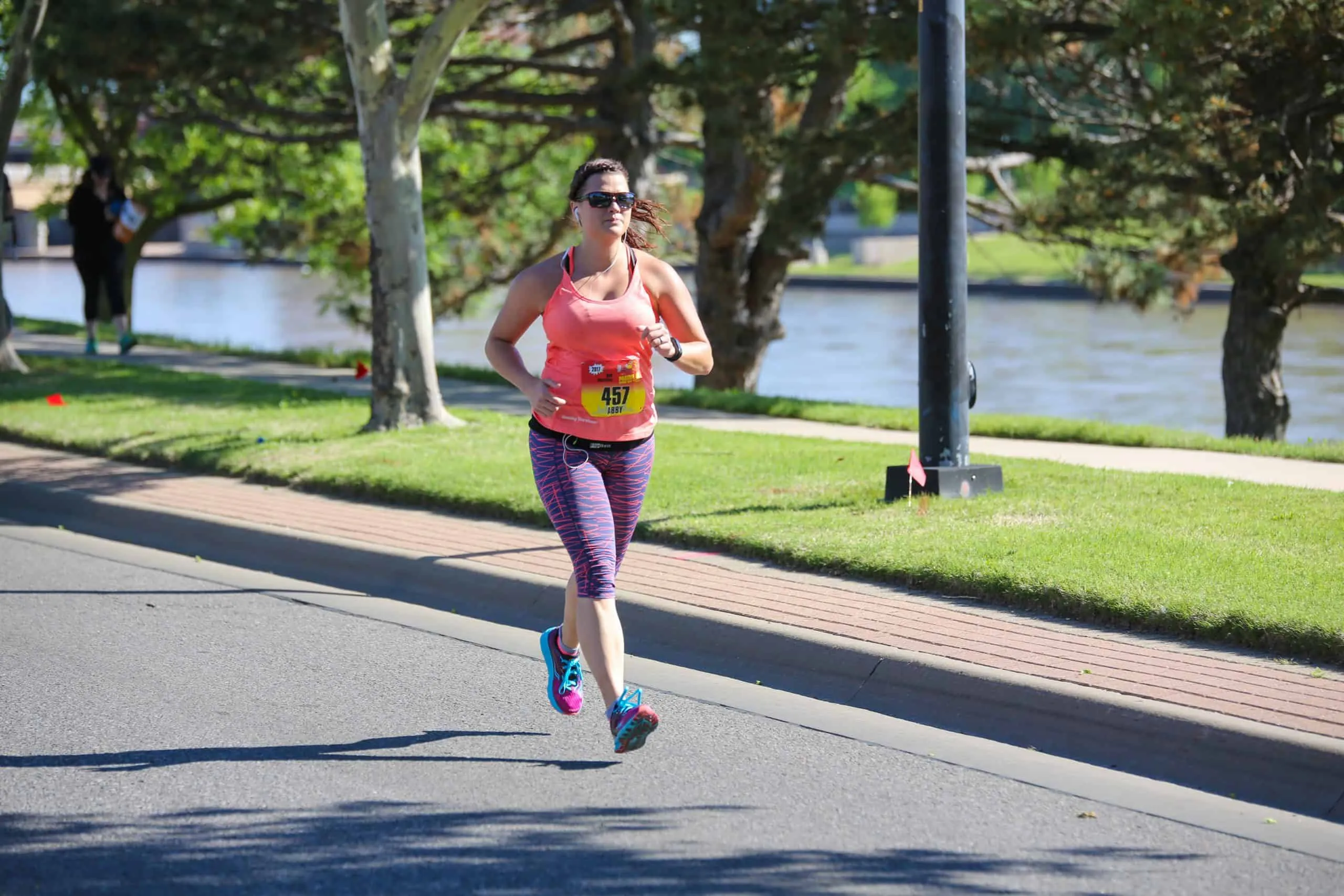
Dr. Abby Siler, PT, DPT is a Physical Therapist with 10 years of experience in a variety of settings. She has spent the majority of her time treating athletes in orthopedic clinics and worker’s compensation cases. She is a runner herself for the past 15 years and a lifelong athlete. Dr. Abby loves to teach runners how to stay injury free and out of her clinic.
